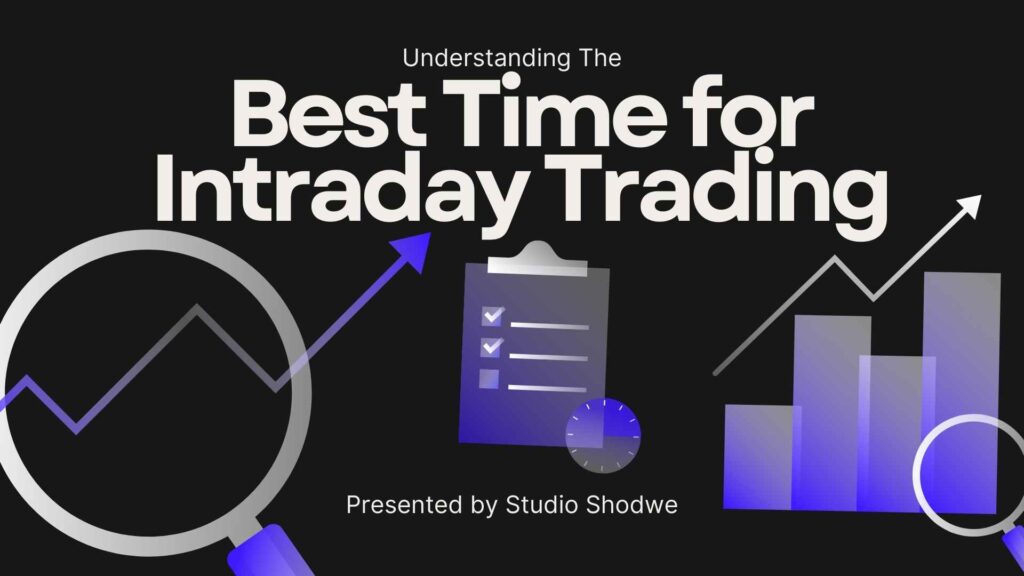Intraday trading—buying and selling stocks within the same trading day—requires precision, speed, and most importantly, timing. Identifying the best time to trade can significantly improve your success rate, reduce risk, and increase profit margins. In this article, we’ll explore the most effective windows for intraday trading, explain why timing matters, and share expert-backed tips for capitalizing on market volatility.
📑 Table of Contents
- What Is Intraday Trading?
- Why Timing Matters in Intraday Trading
- Best Time Frames for Intraday Trading
- Key Indicators to Watch During These Hours
- Tips to Maximize Your Intraday Profits
- FAQs
- Conclusion
What Is Intraday Trading?
Intraday trading, also known as day trading, involves entering and exiting positions within the same trading day. Traders aim to take advantage of small price fluctuations in liquid stocks or indices. Unlike long-term investing, intraday trading focuses on quick decisions, technical indicators, and time-sensitive strategies.
🔎 Learn more about Intraday Trading on Investopedia

Why Timing Matters in Intraday Trading
Timing is everything in the markets. Since price movements in intraday trading are typically small, entering or exiting just a few minutes too early or late can mean the difference between a profit and a loss.
Key reasons why timing matters:
- Volatility windows: Price swings are most intense during certain times of the day.
- Volume surges: Liquidity is crucial for order execution and better spreads.
- News flow: Economic data, earnings reports, and other announcements can cause sudden price movements.
Best Time Frames for Intraday Trading
Let’s break down the trading day into key segments and analyze what each period offers.
Market Opening: 9:15 AM – 10:30 AM
- Why it’s ideal: This window offers the highest volatility and volume. Overnight news is digested, and market reactions are swift.
- Best for: Experienced traders who can handle fast moves.
- Strategy: Momentum trading and gap strategies work well here.
✅ Pro Tip: Use pre-market data and opening range breakout techniques to trade effectively during this window.
Midday Session: 11:00 AM – 1:30 PM
- Why it’s quieter: Traders go on breaks, and market activity cools down.
- Best for: Beginners or risk-averse traders. The market is more stable.
- Strategy: Range-bound or mean-reversion strategies are most effective.
⚠️ Caution: Be wary of low volume and false breakouts during this time.
Closing Session: 2:30 PM – 3:15 PM
- Why it’s useful: Traders re-enter the market, adjust portfolios, or close positions.
- Best for: Catching the end-of-day momentum or reversal patterns.
- Strategy: Use trend confirmation tools like VWAP or RSI.
🧠 Insight: Institutional traders often execute large orders near closing, causing sharp price moves.
Key Indicators to Watch During These Hours
| Indicator | Best Used During | Description |
|---|---|---|
| VWAP (Volume Weighted Average Price) | All day | Helps spot average trading price. Good for trend validation. |
| RSI (Relative Strength Index) | Opening & Closing | Identifies overbought/oversold conditions. |
| Moving Averages (MA, EMA) | Midday & Closing | Great for identifying trends or reversals. |
| MACD (Moving Average Convergence Divergence) | Opening | Best for momentum-based strategies. |
| Bollinger Bands | Midday | Useful in low-volatility markets. |
Tips to Maximize Your Intraday Profits
- Avoid Overtrading: Don’t force trades outside optimal hours.
- Stick to a Watchlist: Focus on 5–10 high-volume stocks or indices.
- Use Stop Losses Religiously: Protect capital from large losses.
- Watch Economic Calendars: Avoid trading during high-impact news unless you’re skilled.
- Practice First: Use demo accounts or paper trading before committing real capital.
🧭 Platforms like TradingView or Thinkorswim offer simulated trading environments.
FAQs
Q1: Is the first hour of the market always profitable?
Not always. While it’s volatile and full of opportunities, the risk is higher too. It’s best suited for seasoned traders with a well-tested strategy.
Q2: Can beginners trade during the market open?
It’s better to start with the midday session to understand market behavior before jumping into the opening rush.
Q3: What is the best time to close intraday trades?
Ideally before 3:15 PM to avoid liquidity issues and slippage as markets approach close.
Q4: Is it better to trade stocks or indices intraday?
Indices like Nifty or S&P 500 are more predictable and have better liquidity, making them ideal for intraday setups.
Q5: Can I rely solely on technical indicators?
No. Technical indicators should support your trading plan, but you should also consider market sentiment, news, and volume.
Conclusion
Choosing the right time to trade intraday can make or break your strategy. While the first and last hours of the trading day offer the most opportunity, they also carry higher risks. New traders might benefit from quieter periods to hone their skills. Regardless of experience level, developing a time-sensitive, disciplined approach is key to success in intraday trading.
📚 Explore more strategies in our detailed guide to Intraday Trading Techniques (example link – replace with your real blog link).


